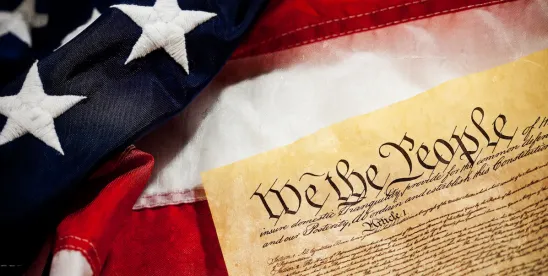Congratulations are in order to the forty-something law clerks that swore in to the Sixth Circuit bar Wednesday. That was a prelude to the court’s en banc argument on campaign finance restrictions in National Republican Senatorial Committee v. FEC. The Committee challenges the constitutionality of part of the Federal Election Campaign Act that places limits on political parties’ “coordinated party expenditures.”
Notably, the en banc court is taking the first pass on the constitutional question. The Act includes a unique judicial review provision that requires the district court to “immediately … certify all questions of constitutionality of this Act” to the court of appeals to “hear the matter sitting en banc.” All 16 of the Sixth Circuit’s non-senior judges sat for the lively argument.
In limiting “coordinated party expenditures,” the Act caps the amount a party may spend on activities like political advertising for a candidate. Even if that spending limitation serves the legitimate objective of limiting corruption and its appearance, the Committee argued, the restriction violates the core First Amendment right to associate with the political candidate of one’s choosing under seminal precedents like Citizens United, McCutcheon, and the 2022 Cruzdecision (all versus FEC).
The Federal Election Commission responded that a Supreme Court decision from 2001 foreclosed that argument. Thus, Wednesday’s argument centered on one case: FEC v. Colorado Republican Federal Campaign Committee or “Colorado II.” Colorado II held that “limits on parties’ coordinated expenditures” are not facially unconstitutional. Buckley v. Valeo upheld the constitutionality of limitations on campaign contributions (different than expenditures), and Colorado II explained that “[e]xpenditures coordinated with a candidate” amount to “contributions.” Limiting the payment of a candidate’s bills, Colorado II reasoned, is constitutional because there is little to no political speech implicated. But the decision was 5-4, with Justice Thomas writing the dissent. The last 20 years have seen the Court’s campaign finance jurisprudence drift in the direction of Justice Thomas’s dissent, most notably with Citizens United. But Colorado II is not overturned, and the Sixth Circuit debated what remains of the precedent.
Enter footnote 17 in Colorado II, which dominated the hour-long discourse. There, Colorado II clarified that an as-applied challenge to limits on “specific [coordinated] expenditures” could prevail. So the Committee’s argument was two-fold: First, Colorado II does not control its facial challenge because the facts and legal landscape have developed since 2001, including Congress amending the Act in 2014; second, based on the footnote, Colorado II explicitly welcomes its as-applied challenge because it only held the regulation was not unconstitutional in every application. The FEC disagreed wholesale, arguing that Colorado II continues to control as a facial holding, and its reasoning applies to the Committee’s as-applied challenge. This as-applied challenge, both parties agreed, sweeps broadly, prompting the court to ask what would remain of Colorado II should the Committee prevail even as-applied.
The parties offer the en banc court three main options (among others). The coordinated expenditure restriction is facially unconstitutional, unconstitutional as-applied to the Committee in this case, or consistent with the First Amendment as-applied (and necessarily survives the facial challenge). It will come as no surprise if the judges split off into all three camps. How the court navigates Supreme Court precedent in an area of law that has developed will matter beyond the realm of campaign finance.
We look forward to the (full) court’s decision in this important case.




 />i
/>i

